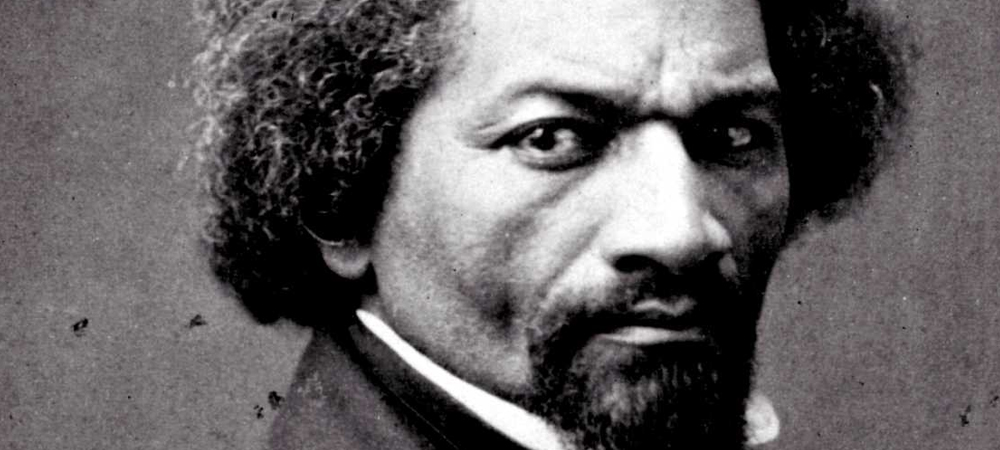50 Experiences of Soldiers and Civilians
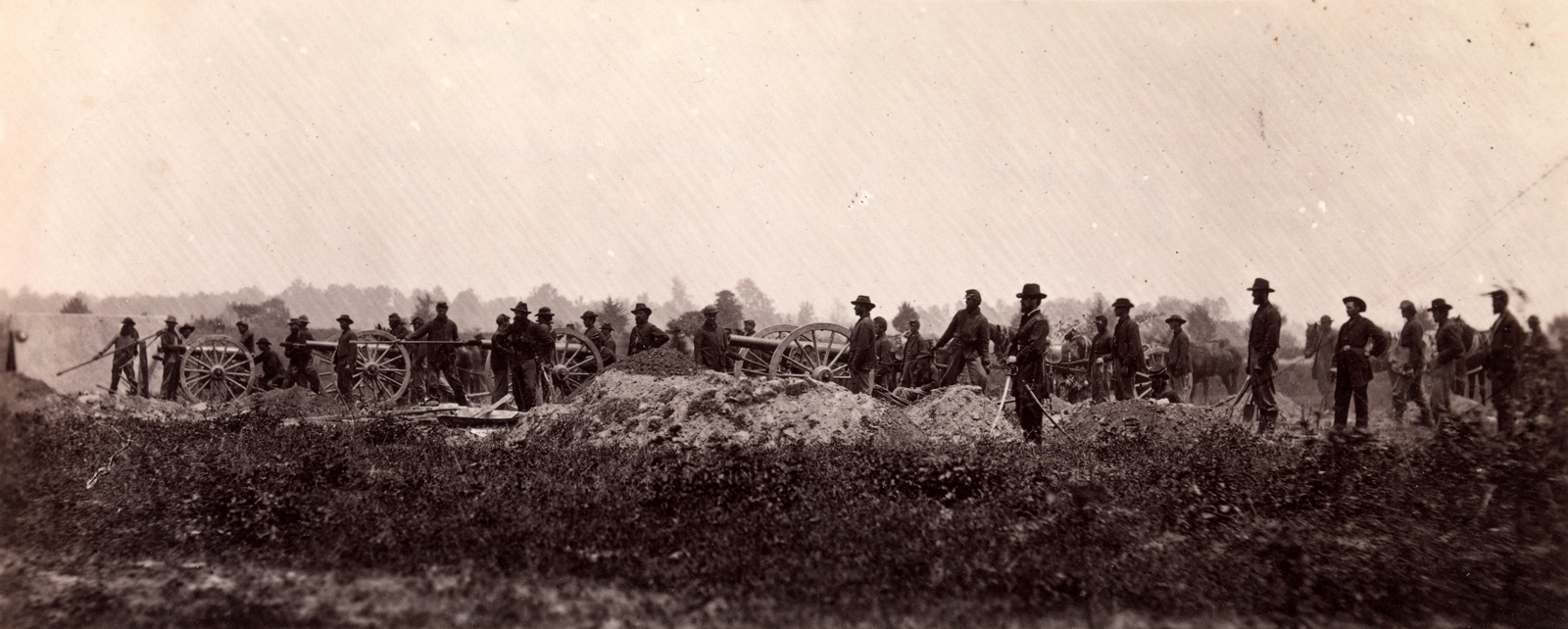
Daily life for a Civil War soldier was one of routine. A typical day began around 6am and involved drill, marching, lunch break, and more drilling followed by policing the camp. Weapon inspection and cleaning followed, perhaps one final drill, dinner, and taps around 9 or 9:30 pm. Soldiers in both armies grew weary of the routine. Picketing or foraging afforded welcome distractions to the monotony.
Soldiers devised clever ways of dealing with the boredom of camp life. The most common activity was writing. These were highly literate armies; nine out of every ten Federals and four out of every five Confederates could read and write. Letters home served as a tether linking soldiers to their loved ones. Soldiers also read; newspapers were in high demand. News from other theatres of war, events in Europe, politics in Washington and Richmond, and local concerns were voraciously sought and traded.
While there were nurses, camp followers, and some women who disguised themselves as men, camp life was overwhelmingly male. Soldiers drank liquor, smoked tobacco, gambled, and swore. Social commentators feared was that when these men returned home, with their hard-drinking and irreligious ways, all decency, faith, and temperance would depart. But not all methods of distraction were detrimental. Soldiers also organized debate societies, composed music, sang songs, wrestled, raced horses, boxed, and played sports.
Neither side could consistently provide supplies for their soldiers, so it was not uncommon, though officially forbidden, for common soldiers to trade with the enemy. Confederate soldiers prized northern newspapers and coffee. Northerners were glad to exchange these for southern tobacco. Supply shortages and poor sanitation were synonymous with Civil War armies. The close proximity of thousands of men bred disease. Lice were soldiers’ daily companions.
As early as 1861, black Americans implored the Lincoln administration to serve in the army and navy. Lincoln, who initially waged a conservative, limited war, believed that the presence of African American troops would threaten the loyalty of slaveholding Border States, and white volunteers who might refuse to serve alongside black men. However, army commanders could not ignore the growing populations of formerly enslaved people who escaped to freedom behind Union army lines. As the number of refugees ballooned, some generals considered commissioning African Americans as laborers and cooks.
As United States armies penetrated deeper into the Confederacy, requiring increased numbers of troops to occupy the South and battle rebel armies, politicians and the Union high command came to understand the necessity, and benefit, of enlisting African American men into the army and navy. Although a few commanders began forming black units in 1862, such as Massachusetts abolitionist Thomas Wentworth Higginson’s First South Carolina Volunteers (the first regiment of black soldiers), widespread enlistment did not occur until the Emancipation Proclamation went into effect on January 1, 1863. “And I further declare and make known,” Lincoln’s Proclamation read, “that such persons of suitable condition, will be received into the armed service of the United States to garrison forts, positions, stations, and other places, and to man vessels of all sorts in said service.”
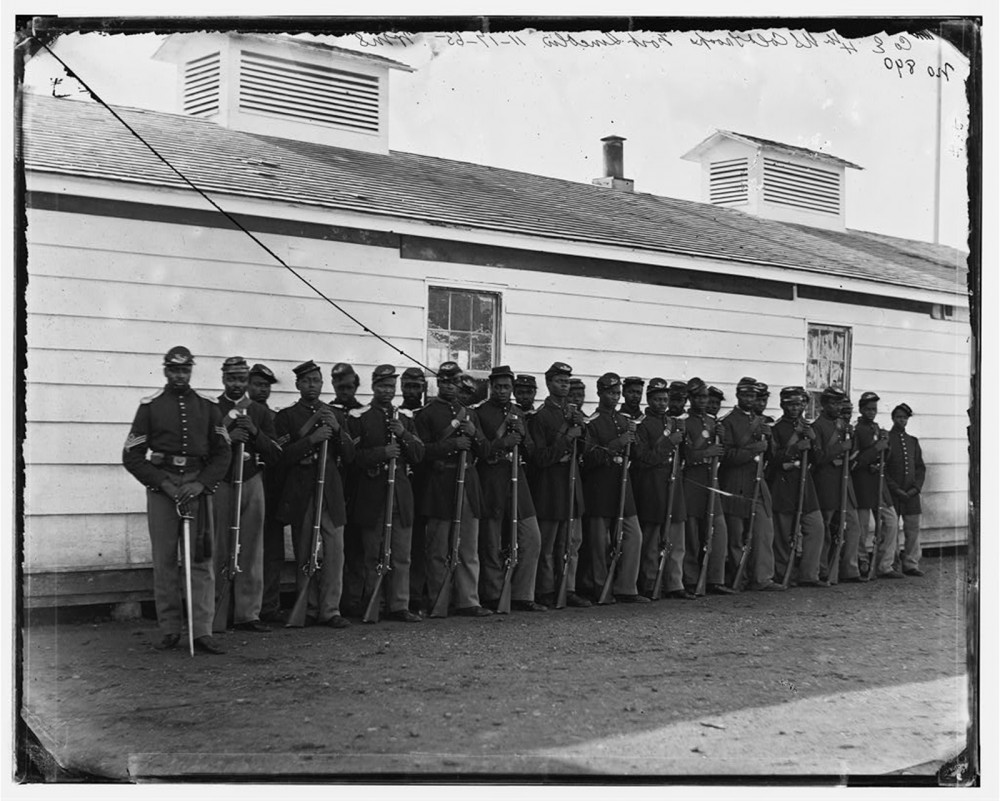
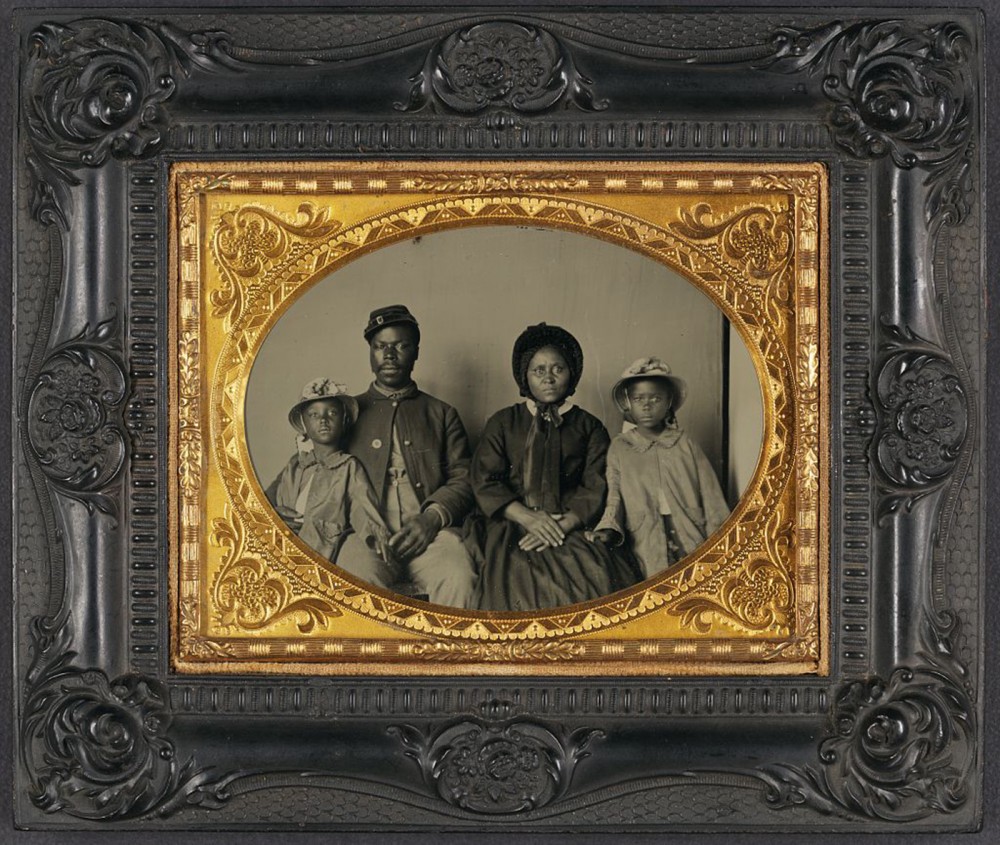
The language describing black enlistment indicated Lincoln’s implicit desire to segregate African American troops from the main campaigning armies of white soldiers. “I believe it is a resource which, if vigorously applied now, will soon close the contest. It works doubly, weakening the enemy and strengthening us,” Lincoln remarked in July 1863 about black soldiering. Although more than 180,000 black men (10 percent of the Union army) served during the war, the majority of United States Colored Troops (USCT) remained stationed behind the lines as garrison forces, often laboring and performing non-combat roles. Inequality, more than glory, defined the black soldiering experience.
African American soldiers in the Union army endured rampant discrimination and earned less pay than white soldiers. Black soldiers also faced the possibility of being murdered or sold into slavery if captured by Confederate forces. James Henry Gooding, a black corporal in the famed 54th Massachusetts Volunteers, wrote to Abraham Lincoln in September 1863, questioning why he and his fellow volunteers were paid less than white men. Gooding argued that, because he and his brethren were born in the United States and selflessly left their private lives and to enter the army, they should be treated “as American SOLDIERS, not as menial hirelings.”
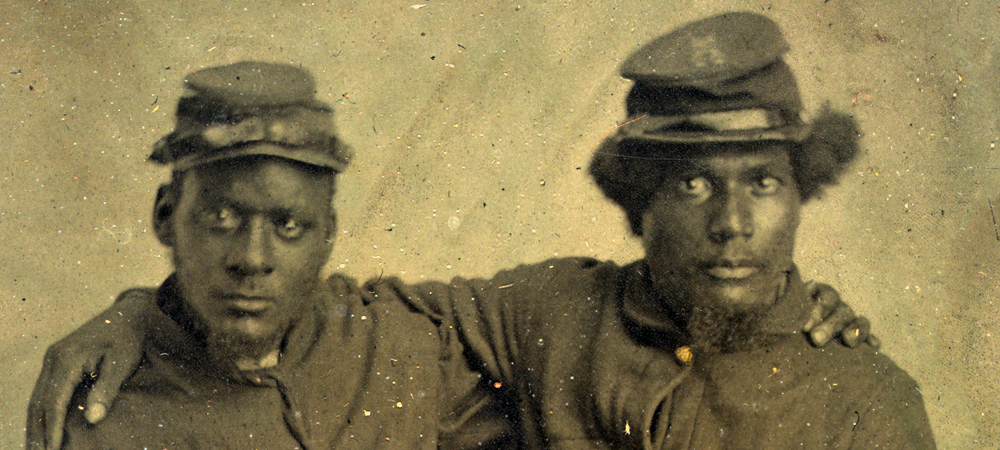
African American soldiers defied the inequality of military service and used their positions in the army to reshape society, North and South. The majority of USCT had once been enslaved, and their presence as armed, blue-clad soldiers sent shockwaves throughout the Confederacy. To their friends and families, African American soldiers symbolized the embodiment of liberation and the destruction of slavery. To white southerners, they represented the utter disruption of the Old South’s racial and social hierarchy. As members of armies of occupation, black soldiers wielded martial authority in towns and plantations. At the end of the war, as a black soldier marched by a cluster of Confederate prisoners, he noticed his former master among the group. “Hello, massa,” the soldier exclaimed, “bottom rail on top dis time!”
In addition to a majority of USCT garrisoning and occupying the South, other African American soldiers performed admirably on the battlefield, shattering white myths that docile, cowardly black men would fold in the maelstrom of war. Black troops fought in more than 400 battles and skirmishes, including Milliken’s Bend and Port Hudson, Louisiana; Fort Wagner, South Carolina; Nashville; and the final campaigns to capture Richmond, Virginia. Fifteen black soldiers received the Medal of Honor, the highest honor bestowed for military heroism. Through their voluntarism, service, battlefield contributions, and even death, African American soldiers laid their claims for citizenship. “Once let a black man get upon his person the brass letters U.S.” Frederick Douglass, the great black abolitionist, proclaimed, “and there is no power on earth which can deny that he has earned the right to citizenship.”
Women also played a major role in the Civil War. According to a Congressional Report, “Franklin Thompson shar[ed] in all [the regiment’s] toils and privations, marching and fighting in the various engagements in which it participated . . . [he was] never absent from duty, obeying all orders with intelligence and alacrity, his whole aim and desire to render zealous and efficient aid to the Union cause.” It was not until after the war that the government and Thompson’s comrades in arms discovered that “he” was actually a woman by the name of Sarah Emma Edmonds. Edmonds was not the only woman who joined the army during the Civil War. Cousins Mary and Mollie Bell served in the Confederate Army under the aliases Tom Parker and Bob Martin. An article in the Indianapolis Daily Ledger stated that “romantic young ladies of late are frequently found in the military service,” indicating that these cases were not isolated incidents.
When South Carolinians fired on Fort Sumter on April 12, 1861, Mary Chesnut was in Charleston. She reported in her diary that after the cannons began to fire, “The women were wild there on the housetop.” This excitement increased the willingness of women to do what they could for the war effort, including strongly encouraging their husbands to join the army. Gertrude Clanton Thompson wrote that “When Duty and Honor called him it would be strange if I would influence him to remain ‘in the lap of inglorious ease’ when so much is at stake. Our country is invaded – our homes are in danger – We are deprived or they are attempting to deprive us of that glorious liberty for which our Fathers fought and bled and shall we tamely submit to this? Never!” However, there were many women who did not support the war, particularly as it wore on. One of these women wrote a letter to North Carolina Governor, Zebulon Vance, saying “Especially for they sake of suffering women and children, do try and stop this cruel war.”
For some women, the best way to support their cause was spying on the enemy. When the war broke out, Rose O’Neal Greenhow was living in Washington D.C., where she travelled in high social circles, gathering information for her Confederate contact. Suspecting Greenhow of espionage, Allan Pinkerton placed her under surveillance, instigated a raid on her house to gather evidence, and then placed her under house arrest, after which she was incarcerated in Old Capitol prison. Upon her release, she was sent, under guard, to Baltimore, Maryland. From there Greenhow went to Europe to attempt to bring support to the Confederacy. Failing in her efforts, Greenhow decided to return to America, boarding the blockade runner Condor, which ran aground near Wilmington, North Carolina. Subsequently, she drowned after her lifeboat capsized in a storm. Greenhow gave her life for the Confederate cause, while Elizabeth “Crazy Bet” Van Lew sacrificed her social standing for the Union. Van Lew was from a very prominent Richmond, Virginia family and spied on the Confederacy, leading to her being “held in contempt & scorn by the narrow minded men and women of my city for my loyalty.” Indeed, when General Ulysses Grant took control of Richmond, he placed a special guard on Van Lew. In addition to her espionage activities, Van Lew also acted as a nurse to Union prisoners in Libby Prison.
Van Lew was not alone in nursing wounded or ill soldiers. The publisher’s notice for Nurse and Spy in the Union Army states, “In the opinion of many, it is the privilege of woman to minister to the sick and soothe the sorrowing—and in the present crisis of our country’s history, to aid our brothers to the extent of her capacity.” Mary Chesnut wrote, “Every woman in the house is ready to rush into the Florence Nightingale business.” However, she indicated that after she visited the hospital “I can never again shut out of view the sights that I saw there of human misery. I sit thinking, shut my eyes, and see it all.” Hospital conditions were often so bad that many volunteer nurses quit soon after beginning. Kate Cumming volunteered as a nurse shortly after the war began. She, and other volunteers, travelled with the Army of Tennessee. However, all but one of the women who volunteered with Cumming quit within a week.
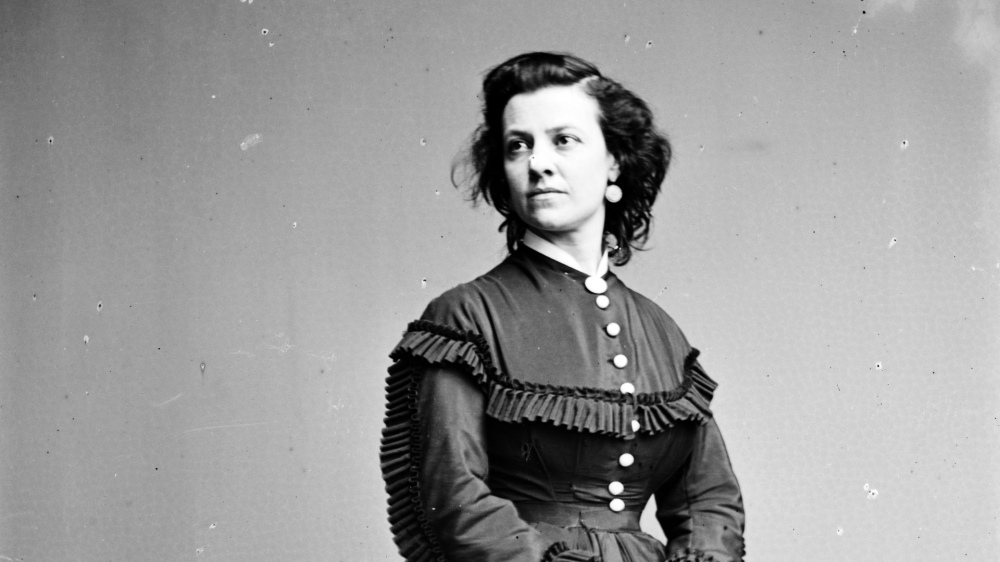
In the North, the conditions in hospitals were somewhat superior. This was partly due to the organizational skills of women like Dorothea Dix, who was the Union’s Superintendent for Army Nurses. Additionally, many women were members of the United States Sanitary Commission and helped to staff and supply hospitals in the North, helping to prevent supply shortages more often than in southern hospitals.
There were other women who travelled with the armies as well. Some of them were the wives or daughters of officers, while others were cooks or laundresses. A third group, prostitutes, sometimes travelled with the army, and sometimes congregated in nearby cities, making them relatively easy for the men in both armies to patronize. In Washington D.C. alone, there were at least 450 brothels, with names like “Headquarters U.S.A.,” “The Wolf’s Den,” and “Madam Russel’s Bake Oven.” Many prostitutes suffered from venereal diseases, including syphilis and gonorrhea, which they transmitted to soldiers. The treatment for these diseases in the 1860s was a urethral shot of salts of mercury – leading to the saying “A night with Venus, a lifetime with Mercury.”
Northern women often found it difficult to prove their loyalty, since the enemy was far away. For pro-Confederate Southern women, there were more opportunities to show their scorn for the enemy. Some women in New Orleans took these demonstrations to the level of dumping their chamber pots onto the heads of unsuspecting Federal soldiers who stood underneath their balconies, leading to Benjamin Butler’s infamous General Order Number 28, which arrested all rebellious women as prostitutes.
Many women who were enthusiastic at the beginning of the war became increasingly disillusioned by death and destruction. Others spent four years supporting the war effort. There was no single, unified women’s experience during the Civil War.
Most African Americans pragmatically hoped that a Union victory would result in their freedom. Though generally suspicious of whites, slaves reasoned that their enemy’s enemy was their friend. Slaves overheard their masters cursing the North and the Republican Party; why would their masters speak that way unless the North somehow threatened slavery? Rumors of sectional crisis, the 1860 election, secession, and civil war spread along the “grapevine telegraph,” an informal chain of communication that brought news to even the remotest slave communities. Many slaves rightly doubted that the white North had their interests at heart, but they hoped the North would liberate them to deprive the South of a huge source of capital, labor, and status.
Though the U.S. government and military understood the war was about slavery in the abstract, they did not intend for the war to involve actual slaves. Their intentions, however, did not matter, because African American forced the Union army to deal with them. Almost as soon as the war began, runaway slaves appeared at Union camps, asking for refuge.
Fugitive slaves posed a dilemma for the Union military. Soldiers were forbidden to interfere with slavery or assist runaways, but many soldiers found such a policy unchristian. Even those indifferent to slavery were reluctant to turn away potential laborers or help the enemy by returning his property. Also, fugitive slaves could provide useful information on the local terrain and the movements of Confederate troops. Union officers became particularly reluctant to turn away fugitive slaves when Confederate commanders began impressing slaves to work on fortifications. Every slave who escaped to Union lines was a loss to the Confederate war effort.
In May 1861, General Benjamin F. Butler went over his superiors’ heads and began accepting fugitive slaves who came to Fortress Monroe in Virginia. In order to avoid the issue of the slaves’ freedom, Butler reasoned that runaway slaves were “contraband of war,” and he had as much a right to seize them as he did to seize enemy horses or cannons. Later that summer Congress affirmed Butler’s policy in the First Confiscation Act.
The act left “contrabands,” as these runaways were called, in a state of limbo. Once a slave escaped to Union lines, her master’s claim was nullified. She was not, however, a free citizen of the United States. Runaways huddled together in “contraband camps,” where disease and malnutrition were rampant. The men were impressed to perform the drudge work of war: raising fortifications, cooking meals, and laying railroad tracks.
Still, life as a contraband offered a potential path to freedom, and thousands of slaves seized the opportunity. Panicked slaveholders abandoned their land at the news of an approaching Union army, while their slaves awaited Yankee liberators. One slave, beloved by her owners as their “mammy,” helped her owners load their belongings and then, to their surprise, told them she was not coming with them. Some slaves moved out of their small cabins and into their old masters’ homes. Others simply left, perhaps to search for a long-lost child, parent, or spouse.
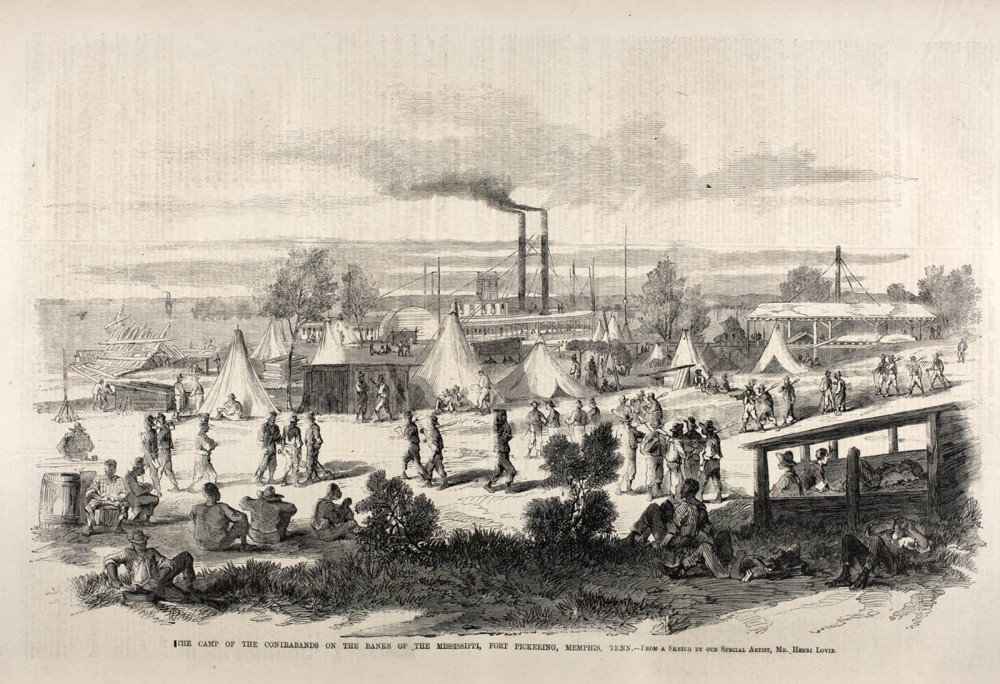
It would be untrue, however, to say that every slave welcomed the Union army with open arms. War brought destruction and chaos, and many slaves preferred the devil they knew to the devil they didn’t. Yankee soldiers raided plantations for food and other supplies, leaving slaves without many of the necessities of life. For slaves living far from the war and Union lines, the northern army loomed like a distant stormcloud; it could bring death or freedom, and slaves could only guess at the outcome.
Many slaves accompanied their masters in the Confederate army. They served their masters as “camp servants,” cooking their meals, raising their tents, and carrying their supplies. The Confederacy also impressed slaves to perform manual labor.
There are three important points to make about these “Confederate” slaves. First, their labor was almost always coerced. Second, people are complicated and have varying, often contradictory loyalties. A slave could hope in general that the Confederacy would lose but at the same time be concerned for the safety of his master and the Confederate soldiers he saw on a daily basis.
Finally, white Confederates did not see African Americans as their equals, much less as soldiers. There was never any doubt that black laborers and camp servants were property. Though historians disagree on the matter, it is a stretch to claim that not a single African American ever fired a gun for the Confederacy; a camp servant whose master died in battle might well pick up his dead master’s gun and continue firing, if for no other reason than to protect himself. But this was always on an informal basis. The Confederate government did, in an act of desperation, pass a law in March 1865 allowing for the enlistment of black soldiers, but only a few dozen African Americans (mostly Richmond hospital workers) had enlisted by the war’s end.
A different picture emerges when we examine the slave’s impact on Union decision making. Slaves forced the Union to see them as people rather than property. Their very presence in contraband camps and fortification works drove the federal government to issue the Emancipation Proclamation and call for black soldiers and sailors. The enslaved people of the South refused to let the United States ignore them.

